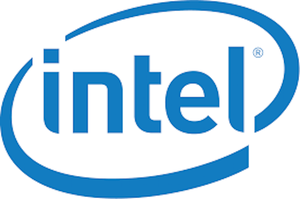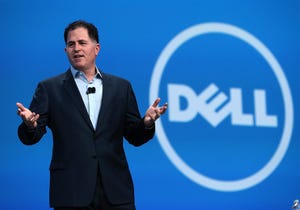Weekend Read: To Expand or Retrench? That is the Multi-Billion Dollar QuestionWeekend Read: To Expand or Retrench? That is the Multi-Billion Dollar Question
Wednesday was a big news day in enterprise tech. The Dell/EMC merger was finalized, HPE sold its non-core software businesses and Intel offloaded its majority stake in longtime security gambit McAfee. What are the implications for the channel?

Wednesday was a big news day in enterprise tech. The Dell/EMC merger was finalized, HPE sold its non-core software businesses and Intel offloaded its majority stake in longtime security gambit McAfee. The declining PC market is forcing the hand of Silicon Valley’s hardware giants as they try to reposition their offerings to accommodate a cloud-based tech industry. According to IDC, global demand for traditional data storage fell 7 percent in the first quarter of this year alone.
This week, two very distinct and different approaches to this repositioning have emerged. With the merger complete, the new Dell Technologies has expanded into a massive conglomerate with a huge market share in servers, storage and virtualization. (Sound familiar, HPE?) In such a quickly evolving ecosystem, it will be interesting to see if Dell can accommodate the pivots necessary to compete; Michael Dell hopes its private company status will allow it to stay nimble enough to adapt to new market realities in contrast to its publicly traded rivals that are hampered by increased regulatory oversight.
On the other side of the spectrum, we’ve seen Intel and HPE offload significant chunks of their businesses. Their strategy reflects a belief that focusing investments and resources on adapting specific portfolios to accommodate the cloud will allow them to establish dominance in a few key sectors.
Rarely have we seen two competing visions of the future playing out at the same time.
Amid all this, channel partners will have to decide which model is most beneficial to their own businesses. Mark Wyllie, CEO of Florida-based Flagship Solutions Group, says the main challenge for the Dell/EMC merger is making two very different company cultures work together in a way that doesn’t negatively affect partners. In the meantime, he’s seeing some end users shy away from EMC products until they see how the merger will play out.
“Any merger like this causes confusion and uncertainty in the market place,” Wyllie told The VAR Guy. “We saw this when IBM announced the x86 divestiture to Lenovo and the same thing is going on with Dell and EMC (not so much VMWare) in terms of customer’s anticipation. We have been involved in opportunities where customers decided to wait on buying EMC and purchased IBM due to the uncertainty.”
On the flip side, partners that sell products or services associated with the business units that HPE and Intel have shed will need to accustom themselves to working with new channel programs. Whether they stick with the offloaded solutions or go to another vendor, partners face uncertainty as they wait to see how the new programs affect their offerings and processes.
The two widely differing approaches hardware vendors are taking to adjust to market demands reflect the uncertainty hardware resellers feel in the current environment. To help partners better understand the thought behind each strategy, The VAR Guy offers more insight to each of Wednesday’s three announcements below.
Next Page: Intel
Intel
Intel, in particular, remains on uncertain ground in the wake of businesses abandoning hardware purchases and moving toward subscription models and cloud computing. Its strategy of focusing on chips for data centers has yet to bear much fruit. Shedding McAfee will free up resources to invest in its core data center business, and perhaps trimming the fat from its portfolio will help the chipmaker become more agile and better able to adapt to a quickly evolving market.
Five years ago, Intel paid $7.7 billion for cybersecurity firm McAfee, betting big on the future of computer security focused on hardwired network connections. In theory, McAfee was a logical complement to Intel’s massive PC sales machine. In practice, however, the unexpectedly swift emergence of cloud and mobile technology rendered the acquisition a dud for Intel—this despite an 11 percent rise in security sales during the first half of this year from the same time last year.
 Amid plummeting PC sales, the semiconductor chipmaker has struggled to bridge the hardware and cloud worlds and is turning to emerging sectors such as the Internet of Things (IoT) and data center computing to help it regain market share. M&A activity has played a large role in its strategy.
Amid plummeting PC sales, the semiconductor chipmaker has struggled to bridge the hardware and cloud worlds and is turning to emerging sectors such as the Internet of Things (IoT) and data center computing to help it regain market share. M&A activity has played a large role in its strategy.
On Wednesday, Intel announced that it’s sold its majority stake in McAfee to investment firm TPG in a deal valued at about $4.2 billion, including debt. The company will retain a 49 percent ownership stake in the cybersecurity firm.
Instead of building a giant conglomerate spanning multiple markets, the company is freeing up resources to devote to its key target markets by divesting itself of non-core assets. Releasing its majority stake in McAfee accomplishes this goal while allowing Intel to retain a slice of the cybersecurity market and capitalize on the trend that led to the initial acquisition in 2011.
“Security remains important in everything we do at Intel and going forward we will continue to integrate industry-leading security and privacy capabilities in our products from the cloud to billions of smart, connected computing devices,” Brian Krzanich, Intel’s chief executive, said in a statement.
Next Page: Hewlett Packard Enterprise
Hewlett Packard Enterprise
Similarly, Hewlett Packard has embarked over the last year on a strategy of streamlining its own offerings. Last year, it separated HP, Inc., which focuses on traditional PC and printing product lines, from Hewlett Packard Enterprise. HPE’s target markets include cloud-based infrastructure, servers and storage. It’s eliminating business units that don’t directly contribute to those bottom lines. Last May, HPE divested itself of its services group, and on Wednesday the company’s CEO, Meg Whitman, announced it’s doing the same thing with its non-core software business.
UK-based Micro Focus has bought most of HPE’s software assets to the tune of $8.8 billion, taking on the bulk of such ill-fated HPE acquisitions as Autonomy, Mercury Interactive and Vertica Systems. Combined, those three deals cost more than $15 billion. Like Intel, HPE is taking a hit.
 But there’s still opportunity to make money with the offloaded assets. HPE will retain a 50.1 percent stake in its software assets, which means if Micro Focus is able to make them profitable, HPE will reap big rewards without having to invest more in a sinking ship. Meanwhile, Whitman will turn her attention to software-defined networking offerings.
But there’s still opportunity to make money with the offloaded assets. HPE will retain a 50.1 percent stake in its software assets, which means if Micro Focus is able to make them profitable, HPE will reap big rewards without having to invest more in a sinking ship. Meanwhile, Whitman will turn her attention to software-defined networking offerings.
“I want to be crystal clear – HPE is not getting out of software. Software is still a key enabler of our go-forward strategy, but we need the right assets to win in our target markets,” said HPE CEO Meg Whitman in a statement. “Moving forward, we will double down on the software capabilities that power and differentiate our infrastructure solutions and are critical in a cloud environment.”
Next Page: Dell Technologies
Dell Technologies
In stark contrast to Intel’s and HPE’s strategies of streamlining operations, Dell has taken the opposite approach by creating one of the largest tech conglomerates the world has ever seen. The company’s $63 billion merger with data storage behemoth EMC was finalized this week, creating a powerhouse in the storage, server, networking and virtualization markets in the form of newly created Dell Technologies. EMC and its various subsidiaries, in particular virtualization service provider VMware, bring product offerings that complement Dell’s and allow the company to pursue the development of its own enterprise-class cloud.
Michael Dell has been frank about how his strategy differs from his competitors.
 “We want to innovate on behalf of customers, and that is a challenge for many public companies—particularly if they don’t have the right portfolio,” said Michael Dell in an interview with Fortune. “What’s unique about Dell, EMC, Virtustream, Pivotal, Secureworks, RSA, etc. is we’ll pull together the best capabilities and we’re private so we can do that on a longer term time horizon. Other companies are out there selling off pieces and are in some form of distress one way or another.”
“We want to innovate on behalf of customers, and that is a challenge for many public companies—particularly if they don’t have the right portfolio,” said Michael Dell in an interview with Fortune. “What’s unique about Dell, EMC, Virtustream, Pivotal, Secureworks, RSA, etc. is we’ll pull together the best capabilities and we’re private so we can do that on a longer term time horizon. Other companies are out there selling off pieces and are in some form of distress one way or another.”
The Dell/EMC deal is complicated enough to make even seasoned financial experts scratch their heads, which is in keeping with Dell’s history. The company went public back in 1988, when the tech industry was solidly focused on hardware sales. But by the middle of the last decade, Dell found itself unable to innovate quickly enough to pull off the significant pivot needed to position itself for success in a cloud-based market. In 2013, Michael Dell went toe-to-toe with shareholders in a complex, risky move to take the company private again—taking on over $33 billion in personal debt in the process.
Wait and See Time for the Channel
Time will tell which tactic—expansion or retrenchment—will yield the biggest payoff in the long run. In the meantime, partners have to educate themselves and decide which strategy best fits their business models and goals. Either way, it’s a gamble for everyone involved until we see who emerges on top when the dust settles.
Read more about:
MSPsAbout the Author
You May Also Like


